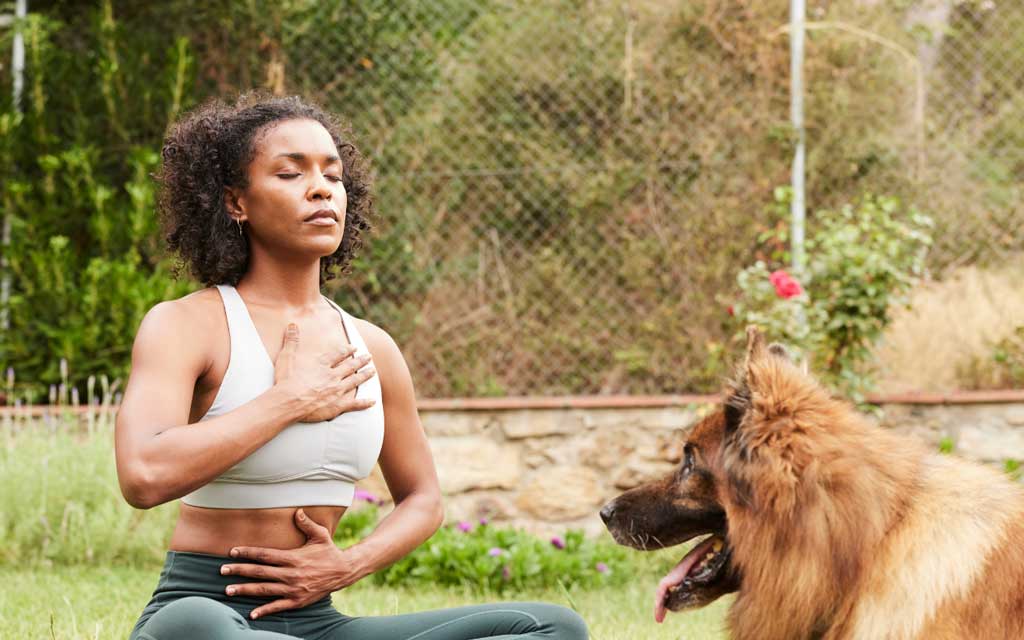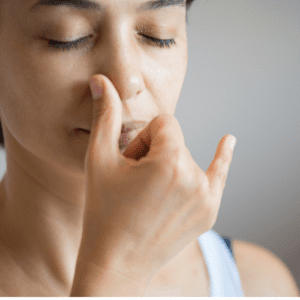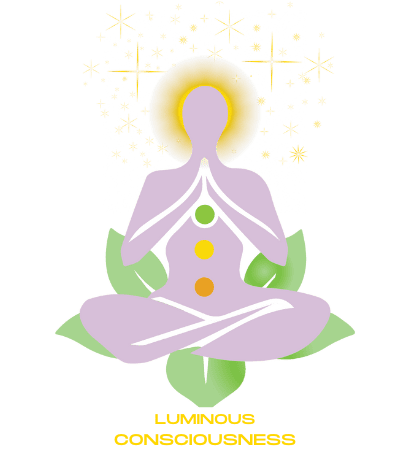Here’s a little transparency: Our website contains affiliate links. This means we may receive a small commission if you click and make a purchase. Don’t worry—there’s no extra cost to you. It’s a simple way you can support our mission to bring you quality content. Learn more at the Affiliate Disclosure page.

Breathwork Techniques to Elevate Your Meditation Experience
Breathing exercises are not just a part of meditation but also of its transformative power. They provide an anchor to help you stay present and deepen your experience. Incorporating specific breathing techniques can significantly amplify the benefits of meditation, from reducing stress and increasing focus to promoting emotional balance and spiritual awareness. Breathwork is the key to unlocking the potential of your inner self.
In this article, we will explore a wide variety of breathing techniques—both traditional and modern—that can elevate your meditation practice. Whether you are new to meditation or seeking to refine your practice, these exercises will help and inspire you to cultivate greater mindfulness and peace.
Understanding the Connection Between Breath and Mind
Breathing serves as a bridge between the body and mind. When stressed, your breath becomes shallow and quick, while relaxed breathing is slow and deep. Through breath control or pranayama, you can influence your emotional state and reach more profound levels of focus in meditation. Studies show that slow, controlled breathing lowers heart rate, reduces cortisol levels, and activates the parasympathetic nervous system, which promotes relaxation and emotional balance.
Benefits of Incorporating Breathing Exercises in Meditation
Incorporating breathing exercises into your meditation practice can bring several benefits:
- Improved Focus: Focusing on your breath helps you stay anchored in the present, reducing distractions and improving your ability to concentrate.
- Reduced Stress and Anxiety: Breathing exercises activate the body’s relaxation response, reducing the production of stress hormones.
- Enhanced Emotional Balance: Deep breathing helps release tension and process emotions, promoting emotional stability.
- Deeper Spiritual Awareness: Many find that breath control helps them connect more deeply with their spiritual selves, enhancing their meditation experience.
Preparing for Breathing Exercises
To get the most out of your breathing exercises, it’s essential to prepare your environment and body properly:
- Set Up a Comfortable Meditation Space: Choose a quiet space where you won’t be disturbed. Use cushions or chairs to support your body.
- Posture and Body Alignment: Sit with your back straight, shoulders relaxed, and hands resting on your knees. Proper alignment allows your breath to flow freely.
- Create a Calm Atmosphere: Dim the lights, play soft music, or use essential oils like lavender to help create a relaxing environment.
Breathing Exercises to Enhance Meditation
Let’s explore a range of breathing exercises, from traditional techniques to trending methods, to enhance your meditation practice.
Diaphragmatic Breathing (Abdominal Breathing)
What is Diaphragmatic Breathing?
Also known as belly breathing, this technique engages the diaphragm, promoting deep breaths that fully oxygenate the lungs.
How It Enhances Meditation
Focusing on deep, rhythmic breathing helps you feel calm and stay centered during meditation.
Step-by-Step Guide:
- Sit or lie down comfortably.
- Place one hand on your chest and the other on your abdomen.
- Inhale deeply through your nose, expanding your abdomen while keeping your chest still.
- Exhale slowly through your mouth, feeling your abdomen fall.
- Repeat for 5-10 minutes, allowing each breath to flow naturally.

Box Breathing (Square Breathing)
What is Box Breathing?
This technique involves equal counts for inhaling, holding, exhaling, and holding again, creating a calming “box” pattern.
How Box Breathing Increases Focus
Box breathing’s steady rhythm promotes mental clarity and calms the nervous system, making it an ideal technique for meditation.
Step-by-Step Guide:
- Inhale for 4 counts.
- Hold your breath for 4 counts.
- Exhale for 4 counts.
- Hold for another 4 counts.
- Repeat for 5-10 minutes, gradually increasing the duration as you feel comfortable.

4-7-8 Breathing Technique
What is the 4-7-8 Method?
This popular breathing technique emphasizes slow exhalations, promoting relaxation and reducing anxiety.
Benefits of Slower Breathing Rhythms
By lengthening your exhalations, the 4-7-8 technique helps slow down the heart rate and calm the mind.
Step-by-Step Guide:
- Inhale through your nose for 4 counts.
- Hold your breath for 7 counts.
- Exhale slowly for 8 counts.
- Repeat the cycle 4-8 times.

Nadi Shodhana (Alternate Nostril Breathing)
What is Nadi Shodhana?
This ancient yogic practice involves alternating breaths between the nostrils, balancing the body’s energy channels.
Balancing Energy Through Breath
Nadi Shodhana is believed to balance the brain’s hemispheres, promoting mental clarity and emotional stability.
Step-by-Step Guide:
- Close your right nostril with your thumb and inhale through the left nostril.
- Close the left nostril with your ring finger and exhale through the right.
- Inhale through the right nostril, then close it and exhale through the left.
- Repeat for 5-10 minutes, alternating nostrils with each breath.

Wim Hof Method
Core Technique
The Wim Hof Method combines breathing exercises with cold exposure and mental focus. It involves a series of deep, rhythmic inhalations followed by breath-holding, designed to increase oxygen levels in the blood.
How It Enhances Meditation
This Method promotes focus, resilience, and a powerful mind-body connection, making it an excellent addition to meditation.
Step-by-Step Guide:
- Lie down comfortably with your head slightly elevated with a light pillow.
- Inhale deeply through your nose or mouth, then exhale without fully releasing the air.
- Repeat for 30-40 cycles.
- After the last exhale, hold your breath for as long as possible.
- Breathe in deeply, hold for 10 seconds, and release.
- Repeat for 3-4 rounds.

Buteyko Breathing
Focus
Buteyko breathing emphasizes nasal breathing, reduced breath volume, and breath-holding to improve overall health and manage respiratory conditions like asthma.
How It Enhances Meditation
Buteyko breathing helps reduce anxiety and promotes a calm, meditative state by promoting slower, more controlled breathing.
Step-by-Step Guide:
- Breathe in gently through your nose for 2-3 seconds.
- Exhale softly through your nose for 3-4 seconds.
- Hold your breath for 5-10 seconds.
- Resume normal breathing, focusing on light and slow breathing through your nose.

Holotropic Breathwork
Approach
Holotropic breathwork involves rapid, deep breathing to induce altered states of consciousness, often used for self-exploration and healing.
How It Enhances Meditation
This intense practice can bring up emotions and insights that deepen your spiritual journey and self-awareness.
Step-by-Step Guide:
- Begin with deep, fast-paced breathing, inhaling fully and exhaling quickly.
- Continue the pattern for 10-15 minutes (or as guided by a facilitator), allowing thoughts and feelings to arise naturally.

Transformational Breath®
Technique
This practice integrates conscious breathing with movement, sound, and affirmations to release emotional blocks and improve energy flow.
How It Enhances Meditation
Transformational Breath® helps clear emotional baggage and energize the body, promoting deep relaxation and spiritual growth during meditation.
Step-by-Step Guide:
- Breathe deeply into the belly through your nose, then exhale with a soft sigh.
- Repeat, using movement or sound to release tension and deepen the breath.

SOMA Breath
Innovation
SOMA Breath combines ancient pranayama techniques with modern science. It uses rhythmic breathing and breath retention to boost creativity and relaxation.
How It Enhances Meditation
The rhythmic nature of SOMA Breath creates a trance-like state, perfect for deep meditation and relaxation.
Step-by-Step Guide:
- Inhale for 4 counts, hold for 2 counts, then exhale for 4 counts.
- Incorporate rhythmic music or mantras to enhance the experience.

Resonant or Coherent Breathing
Method
Resonant breathing involves taking about 5-6 breaths per minute, synchronizing your heart and breath rhythms to promote relaxation and emotional stability.
How It Enhances Meditation
By slowing down the breath, you enter a state of coherence that helps calm the nervous system and deepen your meditative practice.
Step-by-Step Guide:
- Inhale for 5-6 seconds.
- Exhale for 5-6 seconds.
- Repeat for 5-10 minutes, keeping your breaths steady and even.

How Often Should You Practice Breathing Exercises?
To experience the full benefits of breathing exercises, practice them daily. Start with 5-10 minutes and gradually increase the time as you become more comfortable. Consistency is vital to achieving lasting results in meditation and overall well-being.
The Role of Breathing in Different Meditation Practices
- Breath in Mindfulness Meditation: Mindfulness meditation often uses breath as an anchor to keep attention focused on the present.
- Breath in Yoga and Meditation Integration: In yoga, pranayama (breath control) is integrated with movement, promoting a holistic sense of well-being.
- Breath in Transcendental Meditation: While TM doesn’t emphasize breath, controlled breathing can help quiet the mind before you begin.
Common Mistakes to Avoid When Practicing Breathing Exercises
- Over-focusing on Breath: Trying too hard to control your breath can create tension. Let your breath flow naturally.
- Improper Posture: Slouching restricts breath flow. Always sit or stand with good posture.
- Shallow Breathing: Breathing too shallowly limits oxygen intake and reduces the benefits. Focus on deep, full breaths.
Advanced Techniques for Deepening Your Meditation with Breath
Once you’ve mastered basic breathing exercises, you can deepen your meditation practice by combining breathwork with visualization, mantras, or expanding your awareness. These advanced techniques can help you reach deeper states of consciousness.
Breathing and Mindfulness in Daily Life
Breathing exercises aren’t just for meditation—you can use them to stay grounded and relaxed throughout your day. To calm your nerves, practice deep breathing during stressful moments or before a big event.
Conclusion
Breathing is the foundation of life and meditation. Incorporating these diverse breathing techniques can enhance meditation by improving focus, reducing stress, and fostering a deeper connection with oneself. Whether you’re seeking spiritual growth, emotional balance, or simply a greater sense of calm, breathwork offers a powerful tool for transformation.
Enhance your meditation practice with “Breathwork for Life,” a transformative 14-day online program.
Led by SOMA Breath founder Niraj Naik, you’ll experience daily immersive lessons that blend signature breathing techniques with meditations and lifestyle shifts.
Unlock extraordinary health, longevity, peak performance, and spiritual bliss as you master the art of optimal breathwork—and discover how effortlessly it integrates into your life for lasting transformation and well-being. Join now for a journey to a better you.
One of the books I highly recommend if you’re serious about taking control of your life with your breath is the one mentioned above.
This insightful book offers straightforward, actionable strategies to harness the power of your breath without any esoteric fluff.
Dive into a wealth of techniques designed to enhance your mental and physical health, from calming exercises and focus-boosting methods to energy-enhancing routines.
Learn to communicate with your body through breath, improve your CO2 tolerance, and break the dopamine feedback loop.
Whether you’re looking to optimize workouts or deepen meditation, this guide provides everything you need to build a tailored daily practice that fits your goals.
Breathe better, live better, starting today. Get it from here now and change your life!
Frequently Asked Questions About Breathing Effects on Meditation
- How long does it take to see the benefits of breathing exercises?
You may feel immediate relaxation after just one session, but consistent practice over weeks or months will yield long-term benefits, such as improved focus and reduced anxiety. - Can I practice these breathing exercises without meditating?
Yes! Breathing exercises alone effectively reduce stress and improve mental clarity, even without formal meditation. - Is there a best time of day to practice breathing exercises?
Many people find mornings ideal, but you can practice whenever you need relaxation or before a meditation session. - Can breathing exercises help with sleep?
Absolutely. Techniques like 4-7-8 breathing can calm your mind and body, helping you fall asleep faster and sleep more deeply. - What should I do if I feel lightheaded during a breathing exercise?
If you feel lightheaded, stop and breathe normally. It’s essential to listen to your body and never force your breath beyond what feels comfortable.


